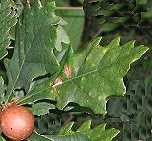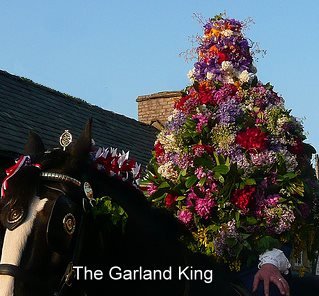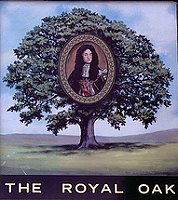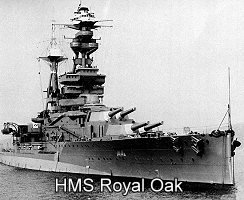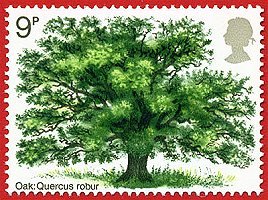Special Days Every Month
Celebrate and learn about special days
every day of the year!
|
Royal Oak Day
29 May |
||||||||
|
Commonwealth of England The English Civil War 1642-1649 was fought between the royalist forces loyal to King Charles I and the parliamentarians led by Oliver Cromwell. The Royalist were defeated at the Battle of Naseby in 1645 and Charles I was caught and executed on 30 January 1649. Cromwell declared Britain a republic ‘The Commonwealth’ and went on to become it’s Lord Protector. Following his death in 1658 Cromwell was succeeded briefly by his son Richard before the monarchy was restored and Charles II became king on 29 May 1660. How was Oak Apple Day marked?
In some areas it was necessary to wear the oak sprig only until noon; after that one was safe In the 1890s many railway engines were decorated with boughs of oak on 29 May. Why was the Oak chosen to commemorate the return of the monarchy? It is said that King Charles’ life was saved after the battle of Worcester in 1651, when he escaped from the Roundhead army by hiding in an oak tree in the grounds of Boscobel House in Staffordshire. How is Oak Apple Day celebrated today? Although the public holiday was abolished in 1859, Oak Apple Day continues to be celebrated in parts of England today. Northhampton still remembers Charles II and his escape after the battle of Worcester. The town is also grateful to Charles II, for giving the citizens one thousand tons of timber from the Royal forests of Whittlewood, after a great fire almost razed the town in 1675. A garland of oak-apples is laid at Charles II’s statue each year. London too celebrates 29 May at the Royal Hospital, Chelsea, which Charles founded as a home for Army pensioners. The Chelsea Pensioners parade on this day for inspection by a member of the Royal Family in honour of King Charles II. Castleton Garland Day is held on Oak Apple Day (unless this is a Sunday when proceedings will take place on the Saturday.) It is custom that has been celebrated in Castleton for hundreds of years, originally, possibly as a fertility rite, but today it is said to commemorate the restoration of Charles II. The Garland is 3 feet high and is made from a wooden frame to which small bunches of wild flowers and leaves are tied. It is worn by a man dressed in Stuart costume
In Worcester, the ‘Faithful City’, Oak Apple Day is commemorated by decorating the entrance gate to Worcester’s Guildhall with oak branches and leaves. The Oak Tree is a symbol of England The image of the Royal Oak can be pubs and hotels signs, on stamps and also on coins (£1). There have also been numerous naval ships, a train and a London underground station named ‘The Royal Oak’.
Also on this day … 29 May 1917: John Fitzgerald Kennedy was born in Massachusetts 29 May 1953: Everest, the world’s tallest mountain conquered
|
See Teaching Resources for today’s date
Back to Facts of the Day Calendar
Jan | Feb | Mar | Apr | May | Jun | Jul | Aug | Sept | Oct | Nov | Dec
 © Copyright – please read © Copyright – please read All the materials on these pages are free for homework and classroom use only. You may not redistribute, sell or place the content of this page on any other website or blog without written permission from the . projectbritain.com | primaryhomeworkhelp.co.uk |
© Copyright 2013
is the creator of the Woodlands Resources section of the Woodlands Junior website.
The two websites projectbritain.com and primaryhomeworkhelp.co.uk
are the new homes for the Woodlands Resources.
left Woodlands in 2003 to work in Kent schools as an ICT Consulatant.
She now teaches computers at The Granville School and St. John’s Primary School in Sevenoaks Kent.
Woodlands Junior Homework Help new website
born on this day what happened on this day famous birthdays interesting facts did you know Interesting Calendar Facts.

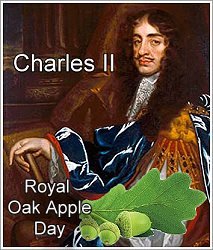 Royal Oak Day (Oak Apple Day) was a public holiday celebrated in England on 29 May to commemorate the restoration of the English monarchy, in May 1660.
Royal Oak Day (Oak Apple Day) was a public holiday celebrated in England on 29 May to commemorate the restoration of the English monarchy, in May 1660. 